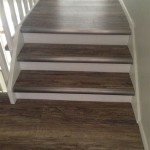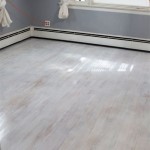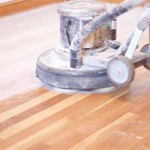How To Install Laminate Flooring on Plywood Subfloor
Laminate flooring presents a cost-effective and visually appealing alternative to hardwood, offering durability and ease of maintenance. Its installation over a plywood subfloor is a common practice in both new construction and renovation projects. This method leverages the stability provided by the plywood to create a solid and even surface for the laminate, ensuring a long-lasting and aesthetically pleasing result. Understanding the correct procedures for preparing the plywood, selecting the appropriate underlayment, and installing the laminate planks is crucial for a successful installation.
Prior to commencing any installation, it is imperative to gather all necessary tools and materials. This preparation will streamline the process and minimize interruptions. Essential tools include a measuring tape, pencil, circular saw or jigsaw, tapping block, pull bar, hammer, spacers, utility knife, and safety glasses. Material requirements encompass the laminate flooring itself, underlayment (specific type depending on subfloor conditions), moisture meter, vapor barrier (if required), and transition moldings.
Key Point 1: Preparing the Plywood Subfloor
The foundation for a successful laminate floor lies in the preparation of the plywood subfloor. This preparation involves several critical steps to ensure that the surface is clean, level, and free of any conditions that could compromise the integrity of the finished floor. Failure to adequately prepare the subfloor can lead to issues such as squeaking, uneven surfaces, and premature wear and tear on the laminate.
The initial step is a thorough cleaning. All debris, including dust, dirt, nails, staples, and remnants of old flooring, must be removed. A vacuum cleaner or broom can be used for general debris removal, followed by a more detailed inspection to identify and address any remaining imperfections. Ensure that any adhesive residue is scraped away, as it can create an uneven surface.
Leveling the subfloor is paramount. Plywood, while generally stable, can exhibit variations in level due to uneven joists or warping. Use a long straight edge or level to identify any high or low spots. High spots can be sanded down using a belt sander or hand planer. Low spots, on the other hand, require filling with patching compound or self-leveling underlayment specifically designed for wood subfloors. Apply the compound according to the manufacturer's instructions, allowing sufficient drying time before proceeding.
Addressing any squeaks or loose areas is also essential. Squeaking floors are typically caused by the subfloor rubbing against the joists. Identify the source of the squeak by walking over the area. Secure the loose section by driving screws through the plywood and into the joist below. Use screws long enough to penetrate the joist sufficiently without protruding through the other side.
Measuring the moisture content of the plywood is a critical step often overlooked. Excess moisture can cause the laminate to warp or buckle after installation. Use a moisture meter to measure the moisture content in several locations across the subfloor. The acceptable moisture level typically varies depending on the laminate flooring manufacturer's recommendations, but generally, it should be below 12%. If the moisture content is too high, identify the source of the moisture and allow the subfloor to dry completely before installing the laminate. Consider using a dehumidifier to expedite the drying process.
Finally, inspect the plywood for any signs of damage, such as rot or insect infestation. Damaged sections should be replaced before proceeding with the laminate installation. Replacing damaged plywood ensures the structural integrity of the subfloor and prevents future problems.
Key Point 2: Selecting and Installing the Underlayment
The underlayment serves as a crucial component in a laminate flooring installation, providing several benefits that contribute to the overall quality and longevity of the floor. It acts as a moisture barrier, sound dampener, and provides a slight cushioning effect underfoot. The selection of an appropriate underlayment depends on the specific conditions of the subfloor and the desired performance characteristics of the finished floor.
There are several types of underlayment available, each with its own advantages and disadvantages. Foam underlayment is a common choice, offering good sound insulation and cushioning. Cork underlayment provides excellent sound reduction and is a sustainable option. Combination underlayments, which incorporate a moisture barrier, are suitable for installations where moisture is a concern.
Choosing the right thickness of underlayment is important. A thicker underlayment can provide more cushioning and sound insulation but may also make the floor feel less stable. Generally, a thickness of 2mm to 3mm is sufficient for most applications. Consult the laminate flooring manufacturer's recommendations for specific guidelines.
Prior to installing the underlayment, consider the need for a separate vapor barrier. If the subfloor is located above an unconditioned space, such as a crawl space, or if the moisture content of the plywood is elevated, a vapor barrier is necessary to prevent moisture from migrating into the laminate flooring. Install the vapor barrier according to the manufacturer's instructions, overlapping the seams and taping them securely.
Roll out the underlayment, covering the entire area of the subfloor. Butt the edges of the underlayment together, ensuring there are no gaps. Some underlayments have adhesive strips for easy joining, while others require taping. Use a suitable tape, such as seam tape, to secure the seams and prevent movement.
Trim the underlayment to fit the room using a utility knife. Ensure that the underlayment extends to the edges of the room, butting up against the walls. Avoid overlapping the underlayment, as this can create an uneven surface. Once the underlayment is installed, it should provide a smooth, consistent surface ready for the laminate flooring.
Key Point 3: Installing the Laminate Flooring
The installation of the laminate flooring itself is a process that requires precision and attention to detail. A proper installation will not only result in a visually appealing floor but also ensure its long-term performance and stability. Following the manufacturer's instructions is crucial, as each brand of laminate flooring may have specific installation requirements.
Start by acclimating the laminate flooring to the room for at least 48 hours. This allows the planks to adjust to the temperature and humidity of the environment, minimizing expansion or contraction after installation. Store the boxes of laminate flooring in the room where they will be installed, following the manufacturer's recommendations for stacking and spacing.
Determine the direction of the flooring. Typically, laminate flooring is installed parallel to the longest wall of the room or the direction of the main light source. This can create a more visually appealing and spacious effect. Consider the layout of the room and the existing flooring in adjacent areas when deciding on the direction.
Begin the installation along a straight wall, leaving a small expansion gap between the laminate flooring and the wall. This gap allows the flooring to expand and contract without binding against the wall, preventing buckling or warping. Use spacers to maintain the expansion gap, placing them along the wall at regular intervals.
Install the first row of laminate planks, following the manufacturer's instructions for the locking mechanism. Typically, this involves angling the plank and clicking it into place. Ensure that the planks are aligned properly and that the joints are tight. Use a tapping block and hammer to gently tap the planks together, ensuring a secure connection. Avoid hitting the planks directly with the hammer, as this can damage the edges.
Continue installing the subsequent rows, staggering the end joints to create a more visually appealing and structurally sound floor. Staggering the joints also helps to distribute the stress on the flooring, preventing weak points. Cut the end planks to fit using a circular saw or jigsaw, ensuring that the cut is clean and accurate. Consider using a laminate flooring blade for optimal results.
When installing around obstacles such as door frames or pipes, use a jigsaw to cut the laminate planks to fit. Measure the dimensions of the obstacle accurately and transfer them to the plank. Allow for the expansion gap when cutting around obstacles.
For the final row of laminate flooring, it may be necessary to cut the planks lengthwise to fit the remaining space. Measure the width of the space accurately and cut the planks accordingly. Use a pull bar to help lock the final row into place, as it may be difficult to reach with a tapping block and hammer.
Remove the spacers and install transition moldings along doorways and at the edges of the flooring where it meets other types of flooring. Transition moldings provide a smooth and visually appealing transition between different floor surfaces. Secure the transition moldings to the subfloor using nails or screws, ensuring that they are flush with the surface of the flooring.
Inspect the finished floor for any imperfections or gaps. Address any issues promptly to prevent future problems. Clean the floor with a damp cloth or a laminate floor cleaner, following the manufacturer's instructions. Avoid using excessive water, as this can damage the laminate flooring.
By following these steps and paying close attention to detail, a successful installation of laminate flooring over a plywood subfloor can be achieved. The result will be a durable, aesthetically pleasing, and long-lasting floor that enhances the beauty and value of the home.

How To Install Laminate Flooring For Beginners
Waterproof Laminate Flooring Installation

How To Install Laminate Flooring The Home Depot

Plywood Flooring How To Install Floors Alternative Hardwood Part 1

Installing Laminate Flooring For The First Time Home Renovation

How To Install Laminate Flooring For The 1st Time Easy Tips Room Renovation

How To Install Laminate Flooring The Home Depot

How To Install Laminate Flooring Easy Diy Guide

How To Install Hardwood Flooring Step By Forbes Home

How To Install Hardwood Flooring Pergo
Related Posts








